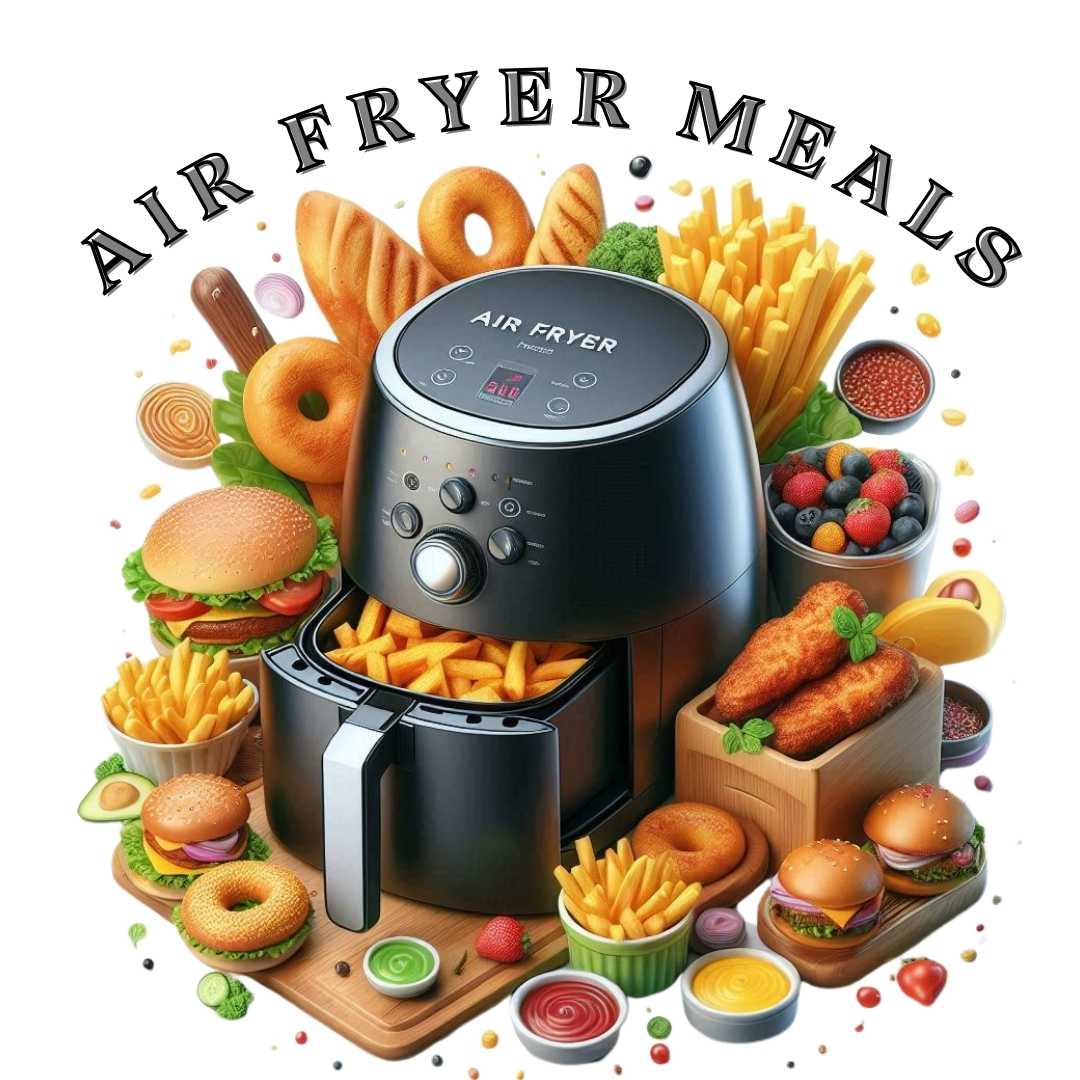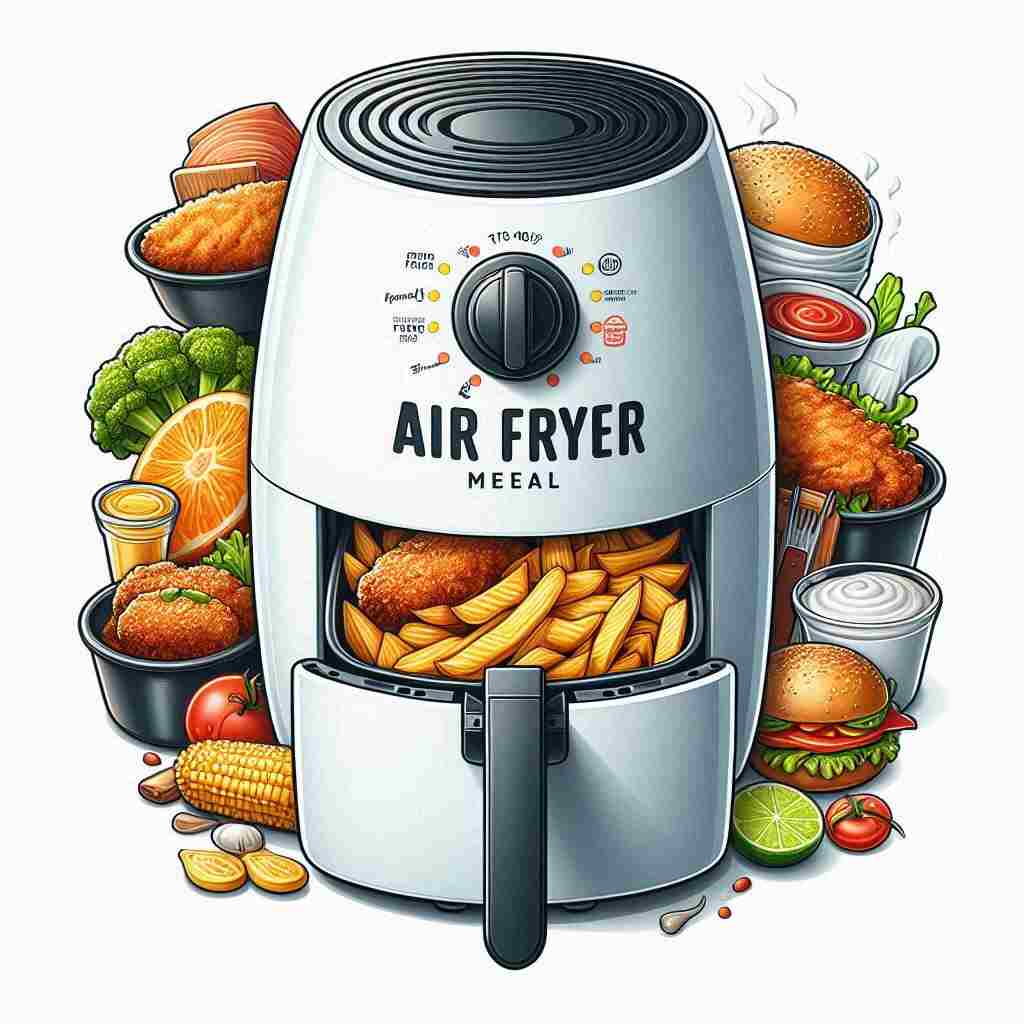You’ve probably heard of air fryers, seen them in stores, or even watched cooking videos showcasing their crispy results. But what is an air fryer, and why has it become such a popular kitchen appliance? An air fryer is a countertop device designed to mimic deep frying by using hot air circulation instead of oil. This means you can achieve a crispy, golden texture on foods without submerging them in unhealthy fats. The rapid air technology in an air fryer makes cooking faster and healthier, making it a must-have for modern kitchens.
How Does an Air Fryer Work? Understanding the Technology
An air fryer works by circulating hot air rapidly around food, similar to a convection oven. The fan inside the appliance distributes heat evenly, allowing the food to cook thoroughly with minimal oil. What is an air fryer’s main advantage? The ability to create crispy textures without deep frying! Instead of soaking food in oil, an air fryer uses a perforated basket that exposes all surfaces of the food to hot air. This ensures an even, crunchy exterior while keeping the inside tender and moist. The cooking time is also shorter compared to traditional ovens, making it an efficient option for busy households.
Different Types of Air Fryers: Finding the Right One for You
When considering what is an air fryer that best suits your needs, it’s important to explore the different types available:
- Standalone Air Fryers – These are compact, egg-shaped units with a removable basket where you place your food. They are ideal for small kitchens and easy storage.
- Countertop Ovens with Air Frying Capability – These models function like a traditional toaster oven but include an air frying feature, offering more versatility.
- Ranges with Air Fry Capability – Modern kitchen ranges now come with built-in air frying technology, eliminating the need for a separate appliance.
Each type has its own benefits, so choosing one depends on your cooking habits and available space.
Benefits of Using an Air Fryer: Why You Should Try One
Many people ask, what is an air fryer’s biggest advantage? The answer lies in its health benefits and convenience. Some key benefits include:
- Healthier Cooking – Air frying requires little to no oil, reducing fat intake compared to deep frying.
- Faster Cooking – The rapid air circulation cooks food faster than traditional ovens.
- Versatility – You can use an air fryer to fry, roast, bake, and even dehydrate food.
- Easy Cleanup – Most air fryer baskets are non-stick and dishwasher-safe, making cleaning simple.
- Energy Efficiency – Using an air fryer consumes less power than a full-sized oven, helping you save on electricity.
These benefits make air fryers an essential tool for those looking to eat healthier without sacrificing flavor and texture.
Is Air Fried Food Healthy? A Look at the Nutritional Benefits
If you’re wondering what is an air fryer’s impact on your diet, the good news is that air frying is a healthier alternative to deep frying. Traditional frying methods require submerging food in oil, which increases calorie and fat content. Air frying, on the other hand, only requires a light mist of oil or none at all, significantly reducing unhealthy fats.
For example, deep-fried French fries can contain up to 17 grams of fat per serving, while air-fried fries have only 4 grams of fat. This makes air frying an excellent choice for those watching their calorie intake or following a heart-healthy diet.
What Can You Cook in an Air Fryer? Best Foods to Try
An air fryer is a versatile appliance that can cook a wide range of foods. If you’re still wondering what is an air fryer capable of making, here are some of the best options:
- Proteins: Chicken wings, salmon, shrimp, pork chops, steak, and tofu.
- Vegetables: Zucchini, broccoli, cauliflower, brussels sprouts, and sweet potatoes.
- Snacks: French fries, onion rings, mozzarella sticks, and roasted nuts.
- Baked Goods: Cookies, donuts, and hand pies.
When air frying, make sure to cut vegetables and proteins into evenly sized pieces to ensure even cooking. Lightly coat them in oil and seasonings for optimal flavor and texture.
What Should Not Be Cooked in an Air Fryer? Foods to Avoid
While air fryers are incredibly versatile, certain foods are not well-suited for this cooking method. If you’re wondering what is an air fryer’s limitation, here are some foods to avoid:
- Wet Batter Foods: Dipped foods like tempura or beer-battered fish won’t cook properly in an air fryer.
- Leafy Greens: Spinach and lettuce can get blown around by the fan, leading to uneven cooking.
- Large Roasts: While an air fryer can cook meat, a full-size roast may not fit properly or cook evenly.
- Cheese-Heavy Foods: Without a proper coating, cheese can melt and create a mess inside the appliance.
Understanding these limitations will help you make the most of your air fryer.
Delicious Air Fryer Recipes: Easy and Tasty Meal Ideas
If you’re still asking, what is an air fryer good for, here are some delicious recipes to try:
Air Fryer Chicken Wings
Ingredients:
- 1 lb chicken wings
- 1 tsp salt
- ½ tsp black pepper
- 1 tsp garlic powder
- 1 tbsp olive oil
- ¼ cup buffalo sauce (optional)
Instructions:
- Preheat your air fryer to 375°F.
- Pat the chicken wings dry and season with salt, pepper, and garlic powder.
- Lightly coat with olive oil and place in the air fryer basket.
- Cook for 25 minutes, flipping halfway through.
- Toss in buffalo sauce and return to the air fryer for 5 minutes.
- Serve with ranch or blue cheese dressing.
Crispy Air Fryer Sweet Potato Fries
Ingredients:
- 2 medium sweet potatoes, cut into fries
- 1 tbsp olive oil
- ½ tsp salt
- ½ tsp paprika
- ¼ tsp black pepper
Instructions:
- Preheat the air fryer to 400°F.
- Toss sweet potatoes with olive oil, salt, paprika, and pepper.
- Place in the air fryer in a single layer.
- Cook for 15 minutes, shaking the basket halfway through.
- Serve with your favorite dipping sauce.
These recipes showcase what is an air fryer’s capability when it comes to cooking healthy and delicious meals.
Choosing the Best Air Fryer: Features to Consider Before Buying
When deciding what is an air fryer that suits your needs, consider:
- Size and Capacity – Small air fryers are great for individuals, while larger ones cater to families.
- Cooking Functions – Some models include additional features like baking, dehydrating, and roasting.
- Ease of Cleaning – Dishwasher-safe parts make cleanup easier.
- Brand and Warranty – Reliable brands offer better performance and durability.
By selecting the right model, you can enhance your cooking experience and make the most of your air fryer.
Final Thoughts
Air fryers have revolutionized home cooking, offering a healthier alternative to traditional frying without sacrificing taste or texture. With the ability to create crispy, delicious meals using little to no oil, they provide a convenient and efficient cooking method for a variety of foods. Whether you’re preparing snacks, main dishes, or even desserts, an air fryer can simplify meal preparation while enhancing flavors.
By understanding how an air fryer works and experimenting with different recipes, you can maximize its benefits and discover a new way of enjoying your favorite meals. With the right techniques and ingredients, you can elevate your culinary skills while making healthier food choices. If you’re considering adding an air fryer to your kitchen, it’s an investment that can pay off in both convenience and improved eating habits.
So, take the plunge, start experimenting, and enjoy the many possibilities that air frying has to offer!


